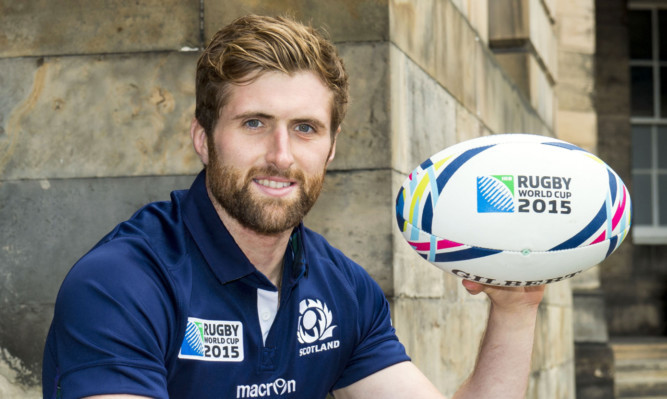Richie Vernon went through the same emotions as four years ago when Scotland’s World Cup squad deadline fell on Monday but with one crucial difference.
In 2011 the former High School of Dundee pupil was in a shakedown for the last back row spot with Johnnie Beattie, and Andy Robinson gave him the nod to go to New Zealand.
Four years on Vernon still was sweating on a place in the squad, but this time it was as a back, having made the transformation from 26-times-capped No 8 and flanker to international centre in just over 18 months.
“I remember the nerves from last time and it’s been pretty similar,” he said. “It’s a kind of lonely feeling waiting for that phone call and not knowing what’s going to happen.
“When the call comes, you have a little panic. It was hugely nerve-racking actually, but I’m obviously so pleased to be involved.”
Vernon had no idea what kind of history he had made in the opening warm-up match against Ireland in Dublin, when he became the first Scotland player since 1878 to start an international game as both a forward and then as a back.
“I didn’t actually know that,” he said. “When I changed position this is something I definitely had on my radar and set my sights on being at least in contention for this World Cup. To have made it is a brilliant feeling and I’m very proud to have done it.
“I definitely feel vindicated. I remember people saying it was a courageous choice but at the time it seemed like quite an easy one to me actually.”
Ironically, he made the switch at a time when Scotland were short of centres something that became less of a problem as the project continued.
“They said looking forward to the next World Cup they didn’t have as much strength in depth in centres than they had in the back row,” recalled Richie. “Then after a year three or four guys started to come through and play better and better at centre, so I started to question the decision a little bit at that stage.
“I was playing for Stirling County trying to transition and see where it would take me. That seems a long time ago now.
“I had thought I would give it a go initially for six months to see how it went, but probably adapted to it better than I thought I might do.
“A lot of people told me 13 was the hardest place to defend and I was really lucky to have had Matt Taylor at Glasgow and lots of good wingers and 12s to work with.”
The big key however was getting game time during the Six Nations for Glasgow, culminating in Vernon forming a fine centre partnership with Peter Horne that was a big factor in the Warriors’ drive to the PRO12 title.
“I still feel I’ve lots to improve on which I’m working hard on,” he continued. “But of course it was a huge vindication just to be back involved in that Ireland game, to get the start at 13 was a great feeling. To be involved in the World Cup squad is an even greater one.”
Vernon did play and score in the back row in one of Glasgow’s biggest games of the season against Bath in the European Cup, but although head coach Vern Cotter mentioned his versatility, Richie’s purely focused on being a back.
“I know the depth Scotland has at back-row, as you’ve seen we’ve had such great competition this time so it would have been a very difficult position to get into,” he pointed out.
“I think the versatility side is more helpful off the bench more than anything, if you’ve got sin-binnings or a few injuries.
“It would probably feel a little alien to me if I was asked but I do feel like it would be something I could do. I have played international rugby in the back row before, although it was a long time ago now, and I’m sure there would be lots of others ahead of me.”
One player who missed out on selection for the World Cup who will not be on stand-by is the 63-times capped lock Jim Hamilton, who announced his international retirement yesterday.
The former Leicester, Edinburgh and Montpellier lock, presently with Saracens, was the 1000th player capped for Scotland when he won his first cap as a replacement against Romania in 2006.
“Never in a million Saturday afternoons did I think I would represent this beautiful country 63 times on the rugby field,” he said in a statement posted on Twitter yesterday morning.
“I have loved every single moment of wearing the thistle and feel extremely humble to have done it for nine years.
“Scottish rugby has given me not only the opportunity to play at the highest level for my country but has made me a better man. I wish everyone involved in Scottish rugby all the best and I know that consistent success is just around the corner.”
